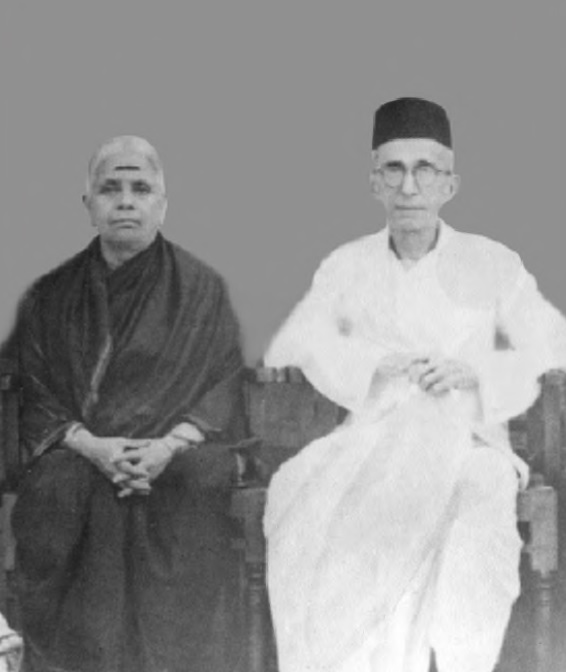
The collective contribution of the four Benegal brothers, Sanjiva Rao, Narsing Rau, Rama Rau, and Shiva Rao, to the idea and making of India has few parallels. Sons of Radhabai and Dr. Raghavendra Rao, a medical doctor, they are a fine example of what being rooted in Indian tradition and values, but being open to modern and progressive ideas can achieve. Despite their conservative upbringing, two found their spouses from another country, and a third from another community. All could have achieved much more than what they did only if they had been ambitious, or compromised on their values or ideals. But, every one chose to serve the country in their own humble ways. In an era of credit grabbing and blame passing, the Benegal brothers remain relatively unknown and under appreciated.
Nehru and the Benegals
Jawaharlal Nehru, in a letter to Motilal Nehru, dated 28 May 1908, commented on his father’s reference in an earlier letter to a bright young boy at Cambridge:
The Brahmin boy, who is alluded to in such complimentary terms, is the brother of the Rau who just failed to get through the I.C.S. last year. He came here the same term as I did and is going to take the maths trip (sic) next year. I did not know before reading this letter that he was so frightfully clever. He certainly works hard enough. The only times I ever see him is in hall or going to hall or lectures. I believe he works all the rest of the time.
Sarvepalli Gopal, ed., Selected Works of Jawaharlal Nehru Vol. 1, 1972, p. 56.
Sarvepalli Gopal was then the General Editor of the Selected Works of Jawaharlal Nehru, on behalf of the Jawaharlal Nehru Memorial Fund. He added a footnote to the above observation of Nehru as follows:
The reference is to B. Rama Rau, brother of B.N. Rau. He joined the Indian Civil Service and served in later years as Ambassador in Japan and the United States and also as Governor of the Reserve Bank.
Gopal erred in stating that Nehru was referring to Benegal Rama Rau. The Rau that Nehru rather dismissively referred to was Benegal Narsing Rau. A triple gold medallist from Madras University, he won all the university prizes he was eligible for, including in Sanskrit. His achievement probably remains unsurpassed even to this day. No wonder then that news of him had reached Motilal’s ears even in faraway Allahabad.
There is more to the Nehru connection, which we will see in future posts.
The ICS Benegals
Out of the two middle Benegal brothers, the only two who chose the Rau spelling with a u-ending, Narsing Rau joined the ICS in 1910, and Rama Rau in 1913. This was the only instance of two Indian brothers joining the ICS. There could have been parallels among the British, like the Cottons (there were four generations of them) and the Campbells. They belonged to the old school where civil servants were only seen, if at all, and rarely heard. That explains why only a little of their writings and speeches are available.
Benegal Narsing Rau
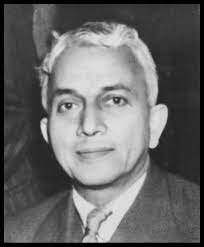
Narsing Rau (1887-1953) was initially posted to the Madras Presidency. But, he wrote to the Civil Service Commissioner stating that he had friends and relatives all over the Presidency. He feared that “it might be very difficult for [him] to perform [his] duties unhampered.” He, therefore, requested for a posting in Burma instead. The Civil Service Commissioner was amused, but found the reasons more cogent than what officers unhappy with their posting usually gave. Eventually, after consulting the Viceroy, he changed Narsing Rau’s posting to Bengal.
In 1952, Narsing Rau became the first Indian to be elected to the International Court of Justice at The Hague. Before that, he was India’s Permanent Representative to the United Nations. These followed an illustrious career in East Bengal, Assam, and for the Round Table Conference and drafting of the Government of India Act, 1935, to name a few. He was also a judge in the Calcutta High Court. After his retirement in 1944, he served as Prime Minister of Jammu and Kashmir. Given his role in drafting the Government of India Act, 1935, which was at the core of the Constitution of India, he played a significant role, acknowledged by B.R. Ambedkar himself, in preparing the draft of the Indian Constitution. The Government of Burma later invited Narsing Rau to draft their constitution. The life of Narsing Rau, like his brothers, requires a more detailed discussion in another post.
Benegal Rama Rau
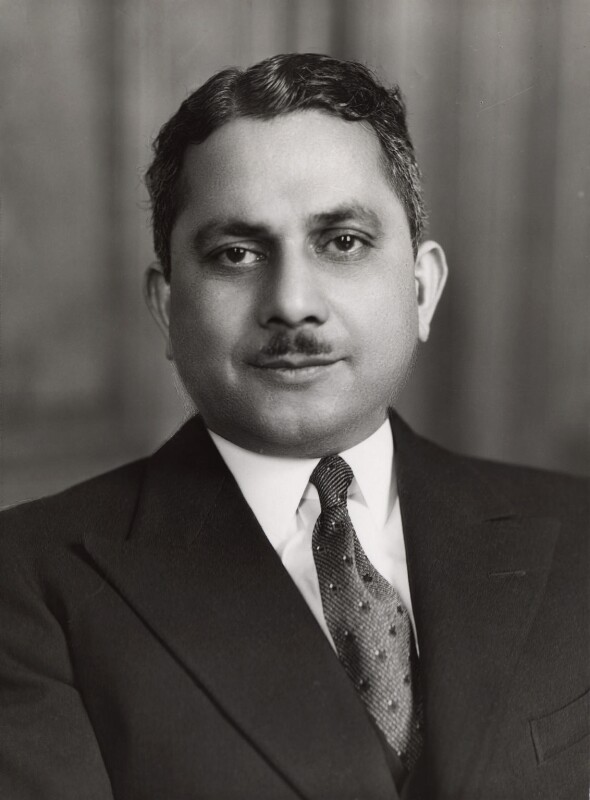
Rama Rau (1889-1969) was also posted to the Madras Presidency. But, he chose to remain there, where he was a batchmate of Sidney Wadsworth (see here). After his initial district postings, Rama Rau served mostly in finance related departments in Madras and in Delhi. Like his brother, he was also seconded to the Round Table Conference as a secretary (so was C.D. Deshmukh, then in England with his family. See here). Before that, he was secretary to the Indian Taxation Committee and Financial Adviser to the Simon Commission.
Rama Rau also worked for the Joint Select Committee of the Parliament that prepared the Bill which became the Government of India Act, 1935. Diplomatic postings in London and South Africa, and chairmanship of Bombay Port Trust followed. After independence, he became Indian Ambassador in Japan and United States.
The last position Rama Rau held was as Governor, Reserve Bank of India, where he has been the longest incumbent to date. The end was, however, sudden. In a matter involving the independence and stature of the Reserve Bank of India, he was at the receiving end of a pointed and vitriolic diatribe from a caustic Finance Minister, T.T. Krishnamachari. Not accustomed to dealing with such boorish behaviour, and receiving no support from the Prime Minister, Rama Rau chose to resign. Following this unsavoury episode, some of his contemporaries on the Reserve Bank board also chose not to seek reappointment. This included the long-serving and venerable Sir Purshotamdas Thakurdas. I have discussed him elsewhere in three parts, but am yet to cover the Reserve Bank period.
The only one among the Benegal brothers to have children, Rama Rau spent the remaining 12 years of his life with his daughters and grandchildren. We will discuss Rama Rau in more detail in a future post.
Benegal Sanjiva Rao
The older brother that Nehru was referring to, as having failed in the ICS examination, was Sanjiva Rao (1884-1964), the eldest of the Benegal brothers. Legend has it that he failed in the ICS examination in the horse riding test. District officials in British India, before motor cars became commonly available, had to traverse long distances on horseback. A riding test was, therefore, compulsory even from the British East India Company days. This tradition continued even into the 1950s that I know of.
The offending horse, of unknown breed, apparently did not take a liking to the Chitrapur Saraswat Brahmin from Mangalore. He not only threw him off his back, but also out of a career in the prestigious heaven-born ICS. This egregious piece of equestrian misjudgement denied a third brother from the same family a place in the ICS. As it turned out, what was ICS’s loss was to benefit the Indian Education Service, which he joined, and the Theosophical Society. More on Sanjiva Rao in another post.
Benegal Shiva Rao
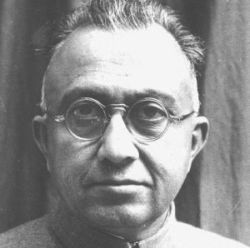
The fourth of the Benegal brothers, Shiva Rao (1891-1975), no less brilliant than his brothers, rejected not only Cambridge and the ICS, but even a career in law which his father preferred for him. Shiva Rao’s life took a different course from that of this brothers. The other three had gone to Cambridge and studied Mathematics. Influenced by Annie Besant and theosophy, all that he got from his father was fifteen rupees to go to Calcutta to meet Aurobindo Ghosh. He became a freedom fighter, parliamentarian, journalist, and trade union leader. He was an active participant in the Round Table Conference and the Constituent Assembly. Later in life, he authored a multi volume opus on the Indian Constitution. We will discuss the life of Shiva Rao, including his writings, in another post.
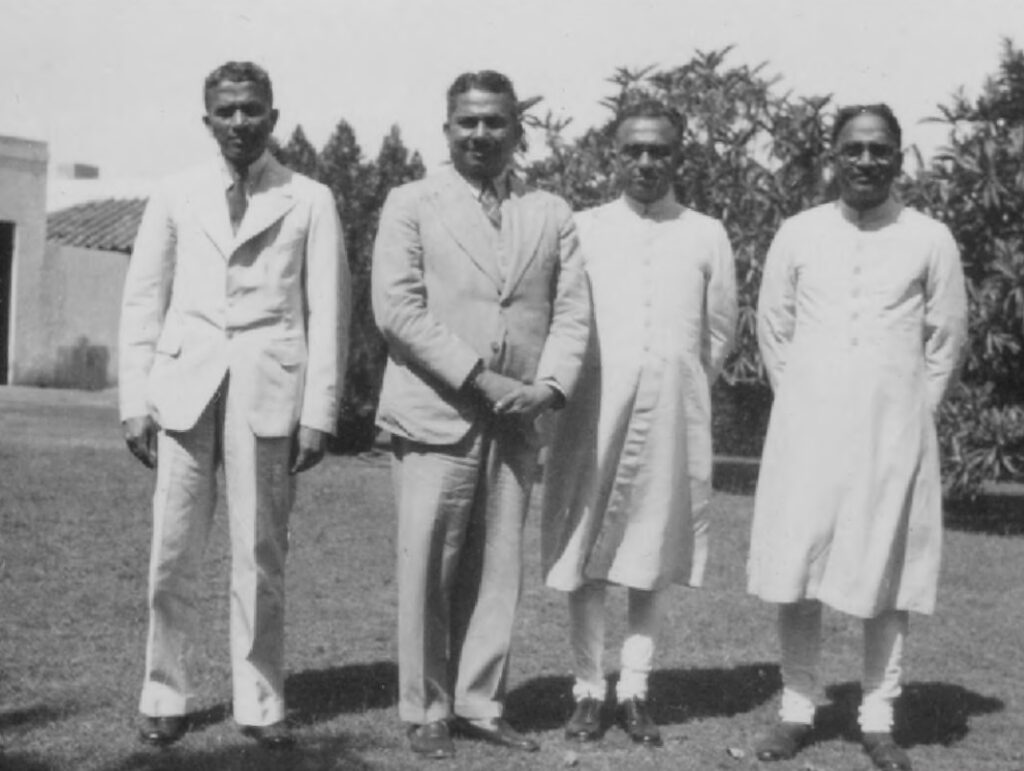
Chitrapur Saraswats
The Benegal brothers were from the Chitrapur Saraswat Brahmin community. Benegal comes from a village near Udupi in then South Kanara district of the Madras Presidency. It is now a part of the Udupi district in Karnataka. Chitrapur Saraswats are a micro-small community of Konkani-speaking Brahmins concentrated around Mangalore. At less than a lakh, they are perhaps smaller than the Parsi community. But, like the Parsis, their contribution far outstrips their share in the population.
Prominent CSBs
Apart from the Benegal Brothers, prominent Chitrapur Saraswats include Sir Narayan Chandavarkar, who was a President of the Indian National Congress, Chief Justice of the Bombay High Court, and Vice Chancellor of Bombay University. Also in the list are Shamrao Vithal Kaikini, the cooperative banker, Guru Dutt, Shyam Benegal, and Girish Karnad, film directors, Dinkar Kaikini and Nityanand Haldipur, classical musicians, Prakash Padukone, All England badminton champion, Nandan Nilekani, IT pioneer, and Kamaladevi Chattopadhyay, freedom fighter and social reformer. Yet another CSB, Anand Chandavarkar, was one of the early economists at the Reserve Bank of India before he moved to the IMF.
Origin of the CSBs
The Saraswats originally lived on the banks of the Saraswati River. Hence the name Saraswat. As the river started drying up, they migrated along different river routes. One group went to Dwaraka and from there by sea to Goa down south. The second to Kashmir from where they fled southward in the 15th century. The third went along the Ganges to present day Bihar and Bengal.
The Chitrapurs, also referred to as Bhanaps (because everyone was related to one Bhanap or the other), originated from the larger Goud Saraswat Brahmins based in Goa. They became Vaishnavites, and during Portuguese Inquisition, moved southward, establishing the Chitrapur Math in Shirali, south of Gokarn in Karnataka. More on CSBs in Frank Conlon, A Caste in a Changing World: The Chitrapur Saraswat Brahmans, 1700-1935. University of California Press, 1977.
Benegal Raghavendra Rao
The father of the Benegal brothers, Benegal Raghavendra Rao, was born in 1856. In those days, the Kanara District was under the Madras Presidency. Even after the district was bifurcated in 1862 and North Kanara went to Bombay Presidency, the South Kanara District remained with Madras Presidency. As educational and job opportunities were few in the area, many migrated to Bombay or Madras for better prospects.
Raghavendra Rao matriculated from the Madras University. Though a good student, financial circumstances did not permit him to study for a medical degree to become a general practitioner. He therefore settled for the LCPS, or the Licentiate of the College of Physicians and Surgeons.
By then already married to Radhabai Baindur, Raghavendra Rao was initially posted in Mangalore. Being good in work, he was promoted as an Asst. Surgeon. After several and frequent transfers, he finally became a Chief Medical Officer at the Madras Port Trust. The couple had four sons and a daughter. They were Sanjiva, Narsing, Rama, Shiva, and Leela.
Uncle Rao or Uncle Rau?
Radhabai’s brother was a renowned teacher of mathematics in Madras. As Raghavendra Rao was frequently on transfer, he put this uncle in charge of his sons. Dhanvanthi Rau, wife of Rama Rau, wrote in her memoirs that this uncle was quite a disciplinarian. But, she did not name him. Kanchan Bannerjee (The Benegal Brothers, 2010) puts his name as Raghavendra Rao, same as the father. This is repeated by Arvind Elangovan in his recent book on Narsing Rau (Norms and Politics: Sir Benegal Narsing Rau in the Making of the Indian Constitution, 1935-50, Oxford University Press, 2019).
The present author believes that this is a case of mistaken identity. Maybe it happened when the father’s name was entered in place of guardian, while the uncle was the real guardian. In the Madras of those days, apart from the College of Engineering, the Madras Medical College and the Madras Veterinary College, there were only three first grade colleges: Presidency College, Madras Christian College, and Pachaiyappas College. As per records of the period, none of these, nor the second grade colleges, had a Raghavendra Rao teaching Mathematics. The only one which had was the College of Engineering, where one Prof. B. Hanumanta Rau taught mathematics (including to this author’s great grandfather, a student at the College from 1904-07). Presumably, B stands for Baindur, which was also the village name of the Benegals’ mother, Radhabai.
This version, in my view, makes better sense as all the four brothers studied at the Presidency College. The College of Engineering, where Hanumanta Rau taught Mathematics, was in those days housed in Chepauk Palace, a stone’s throw from the Presidency College. The four brothers stayed with their uncle, perhaps in a bungalow not far away, in Triplicane or Mylapore.
My version also explains how these two middle brothers came to choose their name Rau spelt with a ‘u’, like their uncle, instead of Rao with an ‘o’.
Hanumanta Rau and Ramanujan
Hanumanta Rau had a role in the life of Srinivasa Ramanujan. As a well-known professor of Mathematics, it was natural that somebody would have brought Ramanujan to him. Ramanujan used to live in Triplicane and frequented the Victoria Students Hostel looking for students to tutor in mathematics. He was leveraging his contacts from native Kumbakonam who were staying at the hostel. The hostel used to house students of various South Madras colleges including the Presidency College and the College of Engineering. It was perhaps not just a coincidence that Prof. Griffith, Principal of the College of Engineering, put in a word to Francis Spring, Chairman of the Madras Port Trust on behalf of Ramanujan who had got a clerical job there. The Madras Port Trust was also where Raghavendra Rao was Chief Medical Officer. I have narrated the story of Ramanujan elsewhere.
Last days of Raghavendra Rao
After his retirement in 1925, Raghavendra Rao started the Charitable Dispensary in Mylapore. He ran it for some time before handing it over to fellow doctors and moved back to Mangalore. In Mangalore, the ideals of a fellow Saraswat, Kudmul Ranga Rao, inspired him to provide equal opportunities to the untouchables. Ranga Rao had given up his legal profession and assumed the name of Ishwaranand. After his death in 1927, as per his wishes, his body was carried to the burial ground by people from the thoti community. Ranga Rao is believed to have influenced Gandhi’s approach towards uplift of the untouchables.
In 1928, Raghavendra Rao started the Abalashram, later renamed Ishwaranand Mahila Sevashram, after Ranga Rao. It was patterned after Maharshi Karve’s Seva Sadans in Bombay and Pune. The Sevashram website states that it aims at providing “shelter to helpless, destitute and orphan girls, without any discrimination of caste & creed, to make them self-supporting and self-reliant members of the Society.”
With advancing age, Raghavendra Rao returned to Madras to be near his eldest son, Sanjiva Rao. But, he stayed independently in a cottage built by his son near his house. Despite having two sons in the ICS, he lived a simple life till the end. He kept himself busy playing contract bridge and spending time with friends. Radhabai passed away in 1948, and Raghavendra Rao in 1952, four years short of his centenary.
Only one of Raghavendra Rao’s sons, Rama Rau, had children, both daughters. One of them, Santha Rama Rau, settled down in the USA after marrying an American. She would make a mark as a prolific writer of travelogues and fiction.
Starting with Benegal Rama Rau, the fourth Governor of the Reserve Bank of India, we will discuss the four brothers separately in future posts.
Note:
For this post, I relied mainly on books by Santha Rama Rau, Dhanvanthi Rau, Kanchan Bannerjee, Arvind Elangovan, and Frank Conlon. The groups photo of the Benegal Brothers, and of their parents, are from Kanchan Bannerjee’s Benegal Brothers. The photograph of Benegal Rama Rau was licensed from the National Portrait Gallery, London.
![]()